#jussieu
Explore tagged Tumblr posts
Text
John Dodson stops Jussier Formiga in the 2nd | UFC on FX: Browne vs Bigfoot
Throwback stoppage from October 2012.
10 notes
·
View notes
Text

hi bitch
its my escher pc, a french accented bard npc that im playing as a pc. his flower is the purple petunia, and his favorite gems are those toxic/radioactive to humans.
he's joining the party out of sheer spite due to strahd unintentionally making escher upset. something petty like not putting the trash away on time, or not putting a book in the right place, or not dusting the hallway. something very minor, one too many times. either way, escher HAD it, and hes going to spend the equivalent of 5 minutes in immortal time (aka the whole campaign in mortal time) to be a very rebellious guy, joining the 'loser' group in highschool equivalent, trashing his apartment equivalent, sabotaging his boyfriend equivalent. toxic toxic boy escher!!
im gonna rp him as a level 1 from intentionally nerfing himself because he does not believe in the party, and he does not care if they die. cue blatant uncaring monotone voice, 'yeah. go team!' behavior while he poses and flirts with others in the background. but, he does want to use them as long as possible, to make strahd upset. as escher says, longer isnt always better, but-
when escher falls/dies in combat, im gonna rp it as him dramatically babygirl 'dying', the 'oh woe is me, i am a fallen maiden, a saer in distress, oh me oh my oh if ONLY MY HUSBAND CARED FOR ME THIS WOULDNT HAVE HAPPENED' 'if only he... celebrated our decade-versary..' x eyes dramatic style. anyways yea he seems like hes gonna be fun. jasndxc
TY FOR EMOTIONAL SUPPORT TAGS: @hot0sauce @shrimpari @mistermango47 (mango hates escher) @lurkingdungeonmaster @crowholtz
#syrips pc: Escher de Jussieu#escher#transparent background#beloved npc: escher#let me know if u wanna be tagged bhjadbshd#things i wanna tag lynks in#thinks i wanna tag spider in#syrips art#gender euphoria
11 notes
·
View notes
Text
OPEN MIC NIGHT ......beaucoup de conneries a Paris Nuit!
Man, it started out to be a beautiful day. The sun has been shining with a nice cool breeze simmer all thoughout air on this early spring season Friday. Right now, it’s evening time as I sit at the bench by the Pantheon. I’m just around the corner from a place called “The Pomme” in the Latin Quartier where I may perform at an OPEN MIC. It’s nestled around the University area in this quartier full…

View On WordPress
#108 yadims recordings#abodhiswayblog#ambient communion#Cardinal Lemoine station#communion#dark ambient music#doom drone#doom//drone#drone music#DSBM#environment#Experimental Metal#Jussieu station#latin quartier#Luxemborg jardin#metro rail#metro subway#Metro Subway Train number 10#Metro Subway train number 7#open mic night#Pantheon Paris#paris nuit#Porte D&039;Italie station#private fundraiser#reflexivity#spring time#T3a metro rail line#the pomme#the ritual#writing
0 notes
Text

Stéphane Passet (1875-1942)
Place Jussieu, angle des rues Linné et des Boulangers, Paris 5ème, 1914
80 notes
·
View notes
Text
Mobilisations le vendredi 7 mars pour défendre la liberté des sciences
Stand Up For Science est un mouvement initié aux Etats-Unis en réponse aux attaques et censures virulentes des institutions de recherche, des agences de régulation, des droits civiques et de la démocratie par l’administration Trump
Le vendredi 7 mars des marches sont organisées dans toute la France, dont Paris
9h30-11h : conférence de presse au Collège de France
11h30-13h : tables rondes et exposés à Jussieu
13h30 : Rassemblement place Jussieu puis marche dans le quartier latin
Ressources :
• Cinquante scientifiques et universitaires appellent à défendre la production et l’accessibilité des sciences
• Tribune de l’IDEEV
• Intervention de Valérie Masson-Delmotte, Olivier Berné et Alain Fisher sur France Inter
• Paru dans Science
• Quelques mesures de censure de la recherche aux USA
24 notes
·
View notes
Text

-The Wine Market at Jussieu-
65 notes
·
View notes
Text
Halloween was yesterday so I'm late, but look at the spooky busts of the place de la Révolution in Montpellier
I mean, I don't know what went wrong with the reproductions of the David d'Angers busts, but they look very rough and cursed
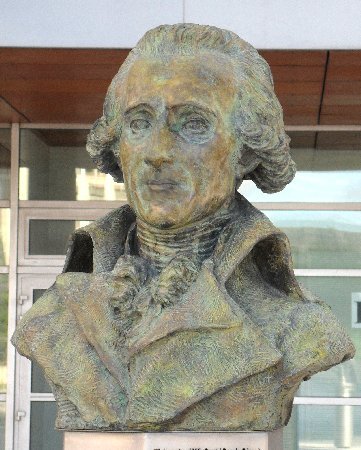
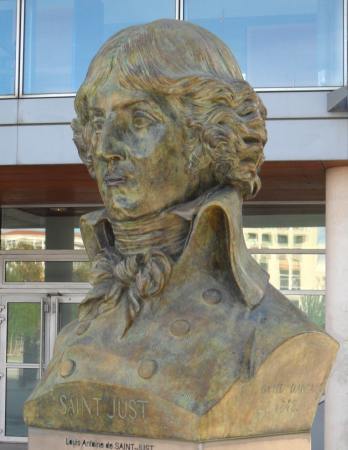
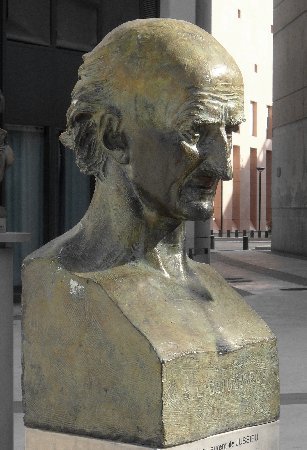
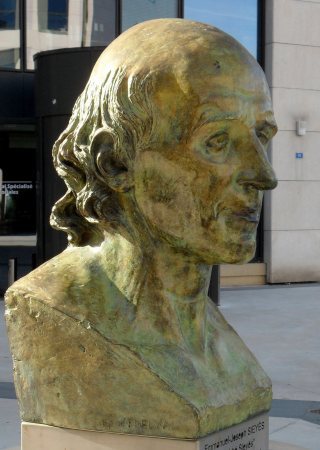
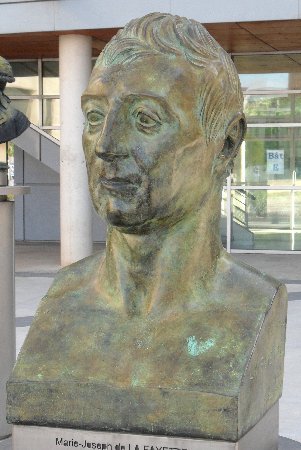

From top to bottom and left to right: Couthon, Saint-Just, Jussieu, Sieyès, Lafayette, and La Révellière-Lépeaux without his famous microbangs mullet. The pictures aren't mine, they're from here.
See the original David d'Angers busts of Saint-Just and Couthon for comparaison
It seems mostly a problem with the d'Angers reproductions cause the other busts in the same place are...well, still cursed...but not as rought looking?
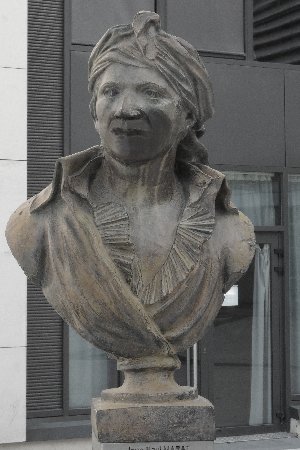
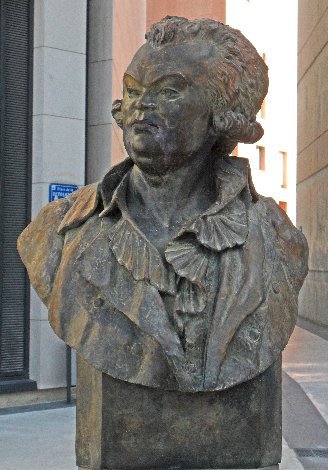
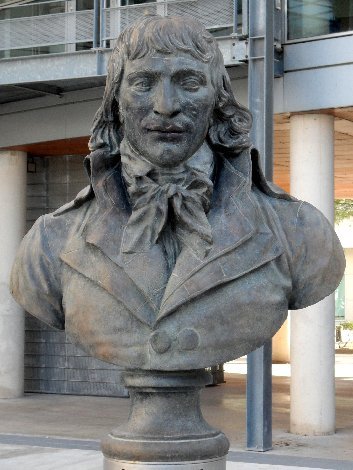
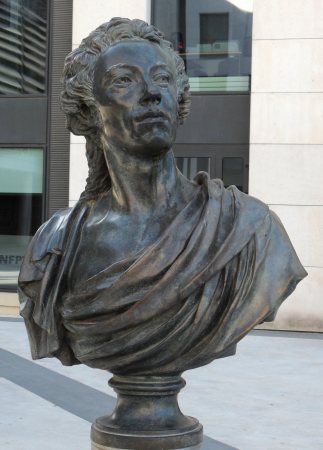
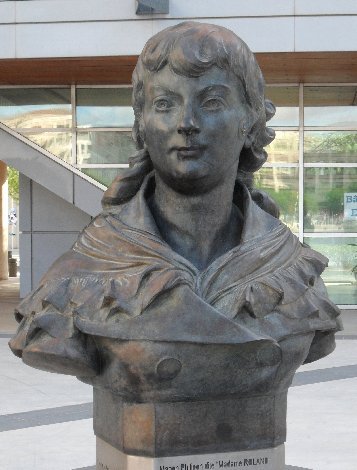

From top to bottom, left to right: Marat by ???, Danton by Paul Eugène Victor Bacquet, Desmoulins by François Martin, Barnave by Jean-Antoine Houdon, Manon Roland by Emile Carlier, and Bailly by Louis-Pierre Deseine. The pictures aren't mine, they're from here.
And then there's the Robespierre by Claude-André Deseine, who's doing alright and has some spiders friends 🕷🕷🕷 (picture from here)
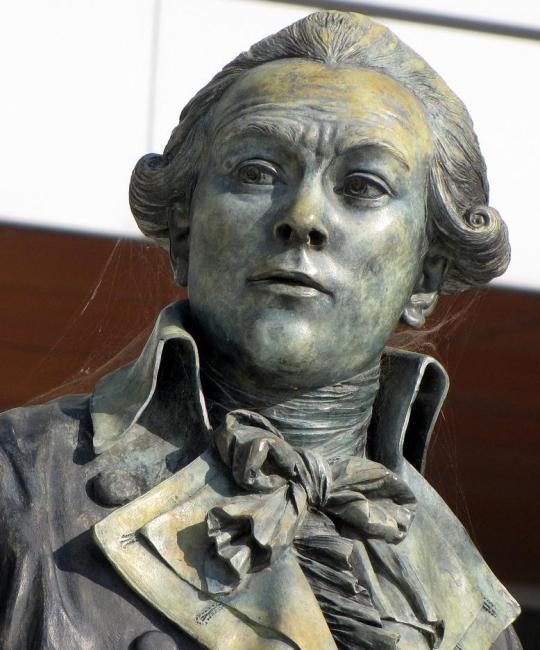
41 notes
·
View notes
Text

Hamburger à l’“espagnole” avec chorizo, tomates séchées et poivrons, et ses frites-salade verte, dans une brasserie du côté de Jussieu post-spectacle, Paris, mai 2025.
2 notes
·
View notes
Text
Ah, des nouvelles de Pokémon Légende de Paris?

...

Merde Nintendo, faut pas prendre ça comme exemple enfin! Paris c'est propre quand, les éboueurs ne font pas grève (ou quand la Mairie de Paris les paie, plutôt que de faire des voyages à 10k euros à Tahiti).

"Ne t'en fais pas, nous ne sommes plus en période de Jeux Olympiques, je ne te fais plus des chambres avec un surcoût de 800%, elles seront juste sept fois plus chères que ce qui est affiché sur le site, je ne l'ai même pas mis à jour de toutes façons."

Et bien, il a bien changé le siège de Bouygues Immobilier.

C'est moi où la présidente de Bouygues me fait penser à Mme Balkany?

Ah, les fameuses "zones de non-droit" chères à notre ministre de l'intérieur!
Donc dans cet univers alternatif, le bois de Boulogne a été redonné à la nature, c'est ça? Ou c'est le Parc des Princes?

Mon mauvais, étant donné que c'est la seule voiture qu'on voit (qui en plus, n'a pas de vignette crit'air), les zones de non-droit ne peuvent qu'être le périph ou pire, les voies sur berges!
Tout se tient, dans cette uchronie, Annie Dalgo met ses plans en oeuvre et "re-nature" les voies utilisées par les véhicules, comme ça, plus de voitures dans Paris! C'est bien pensé!

N'empêche, quelle idée de consacrer des zones où il y a des habitations et des commerces en zones sans voiture exclusivement destinées à être occupées par les pokémons du coin... Quid des humains qui occupaient ces zones, ils ont été déplacés au-delà du périphérique ou quoi?
C'est un peu bizarre comme concept de "coexistence"...

Ah, dieu merci cette vidéo nous montre Dragonfeu. Je me demandais quand même si on parlait bien de Pokémon, puisqu'il n'y avait pas d'image de Dragonfeu.
Et Pharamp chill devant une fac de Jussieu enfin désamiantée? Il n'est pas si mal, cet univers alternatif!

Tiens, ils ont aussi des stands de street-food qui n'est peut-être pas hors de prix, mais quelqu'un a fait tomber sa barbe à papa par terre, et un rat, euh, un surmulot, mange les invendus du marché de la matinée.

Une ville pour les humains et les Pokémons? Tu m'étonnes que personne en veut se baigner dans la Seine s'il y a ça dedans!
Sauf l'actuel premier magistrat de Paris, quel courage tout de même!

"La bouteille? C'est une cuvée spéciale faite par un ami producteur de vin biodynamique en circuit court, ce n'est pas compris dans le prix de la chambre, mais franchement c'est un petit vin très tendance qui fait vivre un producteur local, alors pourquoi s'en priver? Ah, le prix? Oui, évidemment, c'est de la qualité là, pas quelque chose fait pour le grand public tu vois, allez, je te fais une réduction à 90 poké-euros la bouteille, et encore, c'est un cadeau de ma part!"

Fin 2025?
Mais les municipales, c'est en mai-juin 2026 non?
Est-ce que ce jeu va aider Annie Dalgo à briguer un troisième mandat? On y croit!!
#pokemon nonsense#french post#il faut renflouer les caisses de la mairie pour chaque jeu acheté trois centimes vont dans le trésor de la Mairie de Paris#Rachida n'a qu'à bien se tenir avec un jeu aussi proche des idéaux de sa rivale elle perdra encore les prochaines élections#à moins qu'en tant que ministre de la culture (j'arrive toujours pas à m'en remettre lol)#elle fait un truc bizarre pour retarder la sortie jusqu'à juillet 2026#sans déc je me souviens qu'à Illumis il y avait des voitures et des taxis dans le jeu de base#là il n'y a plus rien?#ils ont intérêt à mettre le paquet sur le contenu parce qu'explorer Paris quand l'opus précédent mettait une vraie carte c'est#assez réducteur
10 notes
·
View notes
Text
After 20 Years, Math Couple Solves Major Group Theory Problem
Britta Späth Has Dedicated Her Career To Proving A Single, Central Conjecture. She’s Finally Succeeded, Alongside Her Partner, Marc Cabanes.
— By Leila Sloman, Contributing Correspondent | February 19, 2025 | QuantumMagazine.Org

Kristina Armitage/Quanta Magazine
In 2003, a German graduate student named Britta Späth (opens a new tab) encountered the McKay conjecture, one of the biggest open problems in the mathematical realm known as group theory. At first her goals were relatively modest: She hoped to prove a theorem or two that would make incremental progress on the problem, as many other mathematicians had done before her. But over the years, she was drawn back to it, again and again. Whenever she tried to focus on something else, she said, “it didn’t connect.”
There was a risk that such a single-minded pursuit of so difficult a problem could hurt her academic career, but Späth dedicated all her time to it anyway. It brought her to the office of Marc Cabanes (opens a new tab), a mathematician now at the Institute of Mathematics of Jussieu in Paris who, inspired by her efforts, became consumed by the conjecture, too. While working together, the pair fell in love and eventually started a family.
The problem that absorbed them takes a key theme in mathematics and turns it into a concrete tool for group theorists. Math is full of enormously complicated abstract objects that are impossible to study in their entirety. But often, mathematicians have discovered, it’s enough to look at a small fragment of such an object to understand its broader properties. In the third century BCE, for instance, the ancient Greek mathematician Eratosthenes estimated the circumference of the Earth — roughly 25,000 miles — by measuring shadows cast by the sun in just two cities about 500 miles apart. Similarly, when mathematicians want to understand an impossibly convoluted function, they might only need to look at how it behaves for a small subset of possible inputs. That can be enough to tell them what the function does for all possible inputs.
The McKay conjecture is another example of this principle. It says that if you want to formulate a thorough description of a group — an important mathematical entity that can get prohibitively difficult to study — you only need to look at a tiny piece of it.

While working together on the McKay conjecture, Britta Späth and Marc Cabanes fell in love and started a family. Günther Späth
After the conjecture was posed in the 1970s, dozens of mathematicians tried their hand at proving it. They made partial progress — and in the process they learned a great deal about groups, which are abstract objects that describe the various symmetries of a mathematical system. But a full proof seemed out of reach.
Then Späth came along. Now, 20 years after she first learned about the problem and more than a decade after she met Cabanes, the two mathematicians have finally completed the proof (opens a new tab).
When the couple announced their result, their colleagues were in awe. “I wanted there to be parades,” said Persi Diaconis (opens a new tab) of Stanford University. “Years of hard, hard, hard work, and she did it, they did it.”
The Power of Primes
The McKay conjecture began with the observation of a strange coincidence.
John McKay — described by one friend (opens a new tab) as “brilliant, soft-spoken, and charmingly disorganized” — was known for his ability to spot numerical patterns in unexpected places. The Concordia University mathematician is perhaps most famous for his “monstrous moonshine” conjecture, which was proved in 1992 and established a deep connection between the so-called monster group and a special function from number theory.
Before his death a few years ago, McKay unearthed lots of other important connections, too, many involving groups. A group is a set of elements combined with a rule for how those elements relate to one another. It can be thought of as a collection of symmetries — transformations that leave a shape, a function or some other mathematical object unchanged in specific ways. For all their abstraction, groups are immensely useful, and they play a central role in mathematics.
In 1972, McKay was focused on finite groups (opens a new tab) — groups that have a finite number of elements. He observed that in many cases, you can deduce important information about a finite group by looking at a very small subset of its elements. In particular, McKay looked at elements that form a special, smaller group — called a Sylow normalizer — inside the original group.
Imagine you have a group with 72 elements. This alone doesn’t tell you much: There are 50 different groups (opens a new tab) of that size. But 72 can also be written as a product of prime numbers, 2 × 2 × 2 × 3 × 3 — that is, as 2^3 × 3^2. (Generally, the more distinct primes you need to describe the size of your group, the more complicated your group is.) You can decompose your group into smaller subgroups based on these primes. In this case, for instance, you could look at subgroups with eight (2^3) elements and subgroups with nine (3^2) elements. By studying those subgroups, you can learn more about the structure of your overall group — what other building blocks the group is composed of, for instance.
Now take one of those subgroups and add a few particular elements to it to create a special subgroup, the Sylow normalizer. In your 72-element group, you can build a different Sylow normalizer for each eight-element and nine-element subgroup — these are the 2-Sylow normalizers and 3-Sylow normalizers, respectively.
Sylow normalizers, like the subgroups they’re built out of, can tell mathematicians a lot about the original group. But McKay hypothesized that this connection was far stronger than anyone had imagined. It wasn’t just that a Sylow normalizer could give insights into a finite group’s overall structure. He asserted that if mathematicians wanted to compute a crucial quantity that would help them characterize their group, they’d just have to look at one of a particular set of Sylow normalizers: The Sylow normalizer would be characterized by the exact same number.
This quantity counts the number of “representations” of a certain type — ways you can rewrite elements of the group using arrays of numbers called matrices. Such a tally might seem arbitrary, but it gives mathematicians a sense of how the group’s elements relate to each other, and it is involved in calculations of other important properties.
There seemed to be no good reason why McKay’s quantity should always be the same for a finite group and its Sylow normalizers. A Sylow normalizer might contain just a fraction of a fraction of a percent of the number of elements in the larger group. Moreover, the Sylow normalizer often has a very different structure.
It would be as if “in every U.S. election, you count the votes in general, and in this little town in Montana, they are exactly the same proportionally,” said Gabriel Navarro (opens a new tab) of the University of Valencia. “Not similar, not more or less. Exactly the same.”
But that’s what McKay conjectured — for all finite groups. If true, it would make mathematicians’ lives much easier: Sylow normalizers are much easier to work with than their parent groups. It would also hint at the presence of a deeper mathematical truth, one that mathematicians don’t yet have a handle on.
A year after McKay first observed the coincidence, a mathematician named Marty Isaacs proved that it held for a large class of groups (opens a new tab). But then mathematicians got stuck. They were able to show that it held up for one specific group or another, but there were still infinitely many groups left to tackle.
Proving the full conjecture seemed prohibitively difficult. As it turned out, the next major advance on the problem would require the completion of one of the most herculean mathematical projects in history.
One Giant Leap For Group Theory, One Small Step For McKay
The project — an effort to classify all the building blocks of finite groups — ultimately required thousands of proofs and took more than 100 years to complete. But in 2004, mathematicians finally succeeded in showing that all the building blocks must fall into one of three categories, or else belong to a list of 26 outliers.
Mathematicians had long suspected that, once complete, this classification would help simplify problems such as the McKay conjecture. Maybe they didn’t have to prove the conjecture for all finite groups. Maybe they only had to prove an alternative statement covering the 29 types of building blocks — or for some related set of straightforward groups — that would automatically imply the full McKay conjecture.
“I Wanted There To Be Parades. Years Of Hard, Hard, Hard Work, And She Did It, They Did It.” — Persi Diaconis
But first, someone had to show that this strategy would actually work. The very year that the classification was officially completed, Isaacs, Navarro and Gunter Malle figured out (opens a new tab) the right way to reframe the McKay conjecture so that they only had to focus on a narrow set of groups.
For each group in this new set, they’d have to show something a bit stronger than what McKay had proposed: Not only would the number of representations have to be the same for both the group and the Sylow normalizer, but those representations would have to relate to each other according to certain rules. Isaacs, Navarro and Malle showed that if this stronger statement held for these particular groups, then the McKay conjecture had to be true for every finite group. (“This was during the Euro 2004,” Navarro recalled. His co-authors “didn’t know that I was sneaking off sometimes to see some games. But important things are important things.”)

Gabriel Navarro and two colleagues turned one of group theory’s biggest open conjectures into a tractable problem. Javier Navarro
The trio’s reformulation of the problem was a major breakthrough. Within a few years, mathematicians had used it to resolve most cases of the McKay conjecture. Moreover, it helped them simplify related questions that also involved using one part of an object to study the whole. “Tons and tons of conjectures have now been reduced using this as a blueprint,” said Mandi Schaeffer Fry (opens a new tab), a mathematician at the University of Denver.
But there was one class of groups — “groups of Lie type” — for which the new version of the McKay conjecture remained open. The representations of these groups were particularly difficult to study, and it was challenging to prove that the relationships among them satisfied the conditions that Isaacs, Navarro and Malle had outlined.
But one of Malle’s graduate students was on the case. Britta Späth.
‘Our Obsession’
In 2003, Späth arrived at the University of Kassel to start her doctorate with Malle. She was almost perfectly suited for working on the McKay conjecture: Even in high school, she could spend days or weeks on a single problem. She particularly reveled in ones that tested her endurance, and she fondly recalls long hours spent searching for “tricks that are, in a way, not even so deep.”
Späth spent her time studying group representations as deeply as she could. After she completed her graduate degree, she decided to use that expertise to continue chipping away at the McKay conjecture. “She has this crazy, really good intuition,” said Schaeffer Fry, her friend and collaborator. “She’s able to see it’s going to be like this.”
A few years later, in 2010, Späth started working at Paris Cité University, where she met Cabanes. He was an expert in the narrower set of groups at the center of the reformulated version of the McKay conjecture, and Späth often went to his office to ask him questions. Cabanes was “always protesting, ‘Those groups are complicated, my God,’” he recalled. Despite his initial hesitancy, he too eventually grew enamored with the problem. It became “our obsession,” he said.
There are four categories of Lie-type groups. Together, Späth and Cabanes started proving the conjecture for each of those categories, and they reported several (opens a new tab) major results (opens a new tab) over the next decade.
Their work led them to develop a deep understanding of groups of Lie type. Although these groups are the most common building blocks of other groups, and therefore of great mathematical interest, their representations are incredibly difficult to study. Cabanes and Späth often had to rely on opaque theories from disparate areas of math. But in digging those theories up, they provided some of the best characterizations yet of these important groups.
As they did so, they started dating and went on to have two children. (They eventually settled down together in Germany, where they enjoy working together at one of the three whiteboards in their home.)
By 2018, they had just one category of Lie-type groups left. Once that was done, they would have proved the McKay conjecture.
That final case took them six more years.
A ‘Spectacular Achievement’
The fourth kind of Lie group “had so many difficulties, so many bad surprises,” Späth said. (It didn’t help that in 2020, the pandemic kept their two young children home from school, making it difficult for them to work.) But gradually, she and Cabanes managed to show that the number of representations for these groups matched those of their Sylow normalizers — and that the way the representations matched up satisfied the necessary rules. The last case was done. It followed automatically that the McKay conjecture was true.
In October 2023, they finally felt confident enough in their proof to announce it to a room of more than 100 mathematicians. A year later, they posted it online (opens a new tab) for the rest of the community to digest. “It’s an absolutely spectacular achievement,” said Radha Kessar (opens a new tab) of the University of Manchester.
Mathematicians can now confidently study important properties of groups by looking at their Sylow normalizers alone — a much easier approach to making sense of these abstract entities, and one that might have practical applications. And in the process of establishing this connection, Navarro said, the researchers developed “beautiful, wonderful, deep mathematics.”
Other mathematicians now hope to explore the even deeper conceptual reason why the strange coincidence McKay uncovered is true. Although Späth and Cabanes have proved it, mathematicians still don’t understand why a comparatively tiny set is enough to tell you so much about its larger parent group.
“There has to be some structural reason why these numbers are the same,” Kessar said.
Some mathematicians have done preliminary work to try to understand this connection, but so far it remains a mystery.
Späth and Cabanes are moving on, each searching for their next obsession. So far, according to Späth, nothing has consumed her like the McKay conjecture. “If you have done one big thing, then it’s difficult to find the courage, the excitement for the next,” she said. “It was such a fight sometimes. It also gave you, every day, a purpose.”
#Group Therapy#Mathematics 🧮#Moonshine#Symmetry#Physics#Biology 🧪🧫🧬#Computer Science#Quanta Magazine
2 notes
·
View notes
Link
A mentor of research scientist Meloë Kacenelenbogen once shared a sentiment from French author André Gide: “You cannot discover new oceans unless you have the courage to lose sight of the shore.” Kacenelenbogen pushes beyond her comfort zone to explore the unknown. Name: Meloë S. KacenelenbogenFormal Job Classification: Research scientistOrganization: Climate and Radiation Laboratory, Science Directorate (Code 613) Dr. Meloë S. Kacenelenbogen is a research scientist at NASA’s Goddard Space Flight Center in Greenbelt, Md. She studies the impact of aerosols on air quality and the Earth’s climate.Photo courtesy of Meloë Kacenelenbogen What do you do and what is most interesting about your role here at Goddard? I study the impact of aerosols — suspended particles from, for example, wildfire smoke, desert dust, urban pollution, and volcanic eruptions — on air quality and the Earth’s climate. I use space, air, and ground-based observations, as well as models. Why did you become a scientist? What is your educational background? I never made a deliberate choice to become a scientist. I started with very little confidence as a child and then built up my confidence by achieving things I thought I could not do. I chose the hardest fields to work on along the way. Science looked hard and so did fluid mechanics, remote sensing, and atmospheric physics. I have failed many times, but I always learn something and move on. I do get scared and maybe even paralyzed for a day or two, but I never let fear or failure immobilize me for long. I was born in Maryland, but my family moved to France when I was young, so I am fluent in French. I have a bachelor’s and master’s degree in mechanical engineering, and physical methods in remote sensing from the Université Pierre et Marie Curie (Paris VI, Jussieu). In 2008, I got a Ph.D. in atmospheric physics for applying satellite remote sensing to air quality at the Université des Sciences et Technologies de Lille (USTL), France. What are some of your career highlights? After my Ph.D., I worked for the Atmospheric Lidar Group at the University of Maryland, Baltimore County (UMBC), on spaceborne and ground-based lidars. In 2009, I got a NASA Post-doctoral Program (NPP) fellowship at the agency’s Ames Research Center in California’s Silicon Valley, where I worked for 13 years on space-based, aircraft-based, and ground-based atmospheric aerosol vertical distribution and aerosol typing. In 2022, I came to work at the Climate and Radiation Lab at Goddard. What is most interesting about aerosols? Aerosols are very topical because they have a huge impact on the air we breathe and our Earth’s climate. The smaller the aerosol, the deeper it can get into our lungs. Among other sources, aerosols can come from cars, factories, or wildfires. We all know that wildfires are becoming bigger and more frequent. They are expected to happen even more frequently in the future due to climate change. Both when I was living in California and here in Maryland, I have experienced first-hand choking from the wildfire smoke. I will always remember how apocalyptic it felt back in the summer of 2020 in California when wildfire smoke was paired with COVID confinement, and the sky turned Mars-like orange. Please tell us about your involvement with the Atmosphere Observing System (AOS)? I am incredibly lucky to be able to contribute to the next generation of NASA’s satellites. I am working on AOS, which will observe aerosols, clouds, convention, and precipitation in the Earth’s atmosphere. I am part of the team that is helping design several instruments and algorithms. My role is to connect this spaceborne observing system to all our other space, ground, and air-based measurements at the time of launch. We are making a mesh of observations to address the science questions, run the algorithms, and validate the spaceborne measurements. I am constantly pushed to expand my horizon and my own knowledge. Why do you enjoy always challenging yourself intellectually? I started that way. I had no confidence, so I felt that the only way I could build my confidence was to try doing things that scared me. I may sometimes be a little scared, but I am never bored. What did you learn from your mentors? A few years ago, a mentor shared a quote from André Gide with me that encapsulates what we are talking about: “You cannot discover new oceans unless you have the courage to lose sight of the shore.” In other words, it is OK, maybe preferable, to be out of my comfort zone to explore the unknown as scary as it may be. Along the way, it has been extremely important for me to deliberately choose mentors. To me, a good mentor has earned the respect of all who have worked with them, is uplifting, reassuring, and gives me the invaluable guidance and support that I need. I deliberately try to surround myself with the right people. I have been very, very fortunate to find incredible people to encourage me. As a mentor, what do you advise? I tell them to deliberately choose their mentors. I also tell them that it is OK to be uncomfortable. Being uncomfortable is the nature of our field. To do great things, we often need to be uncomfortable. Why do you enjoy working on a team? I love working on teams, I love to feed off the positive energy of a team whether I lead it or am part of it. In my field, teamwork with a positive energy is incredibly satisfying. Everybody feeds off everybody’s energy, we go further, are stronger, and achieve more. This may not happen often, but when it does it makes it all worth it. What are the happiest moments in your career? I am always happiest when the team publishes a paper and all our efforts, are encapsulated in that one well-wrapped and satisfying peer-reviewed paper that is then accessible to everyone online. Every paper we publish feels, to me, the same as a Ph.D. in terms of the work, pain, energy, and then, finally, satisfaction involved. What do you hope to achieve in your career? I want to have been a major contributor to the mission by the time the AOS satellites launch. What do you do for fun? I do mixed martial arts. I love the ocean, diving, and sailing. I also love going to art galleries, especially to see impressionist paintings to reconnect with my Parisian past. Meloë Kacenelenbogen once shared a sentiment from French author André Gide: “You cannot discover new oceans unless you have the courage to lose sight of the shore.”Photo courtesy of Meloë Kacenelenbogen Who is your favorite author? I love Zweig, Kafka, Dostoyevsky, Saint-Exupéry, and Kessel. The latter two wrote a lot about aviators in the early 1900s back in the days when it was new and very dangerous. Those pilots, like Mermoz, were my heroes growing up. Who would you like to thank? I would like to thank my family for being my rock. What are your guiding principles? To paraphrase Dostoevsky, everyone is responsible to all men for all men and for everything. I have a strong sense of purpose, pride, justice, and honor. This is how I try to live my life for better or for worse. By Elizabeth M. JarrellNASA’s Goddard Space Flight Center, Greenbelt, Md. Conversations With Goddard is a collection of Q&A profiles highlighting the breadth and depth of NASA’s Goddard Space Flight Center’s talented and diverse workforce. The Conversations have been published twice a month on average since May 2011. Read past editions on Goddard’s “Our People” webpage. Explore More 6 min read Christine Knudson Uses Earthly Experience to Study Martian Geology Geologist Christine Knudson works with the Curiosity rover to explore Mars — from about 250… Article 6 days ago 9 min read Systems Engineer Noosha Haghani Prepped PACE for Space Article 2 weeks ago 6 min read Astrophysicist Gioia Rau Explores Cosmic ‘Time Machines’ Article 3 weeks ago Share Details Last Updated Oct 22, 2024 EditorMadison OlsonContactRob [email protected] Space Flight Center Related TermsPeople of GoddardGoddard Space Flight CenterPeople of NASA
2 notes
·
View notes
Text

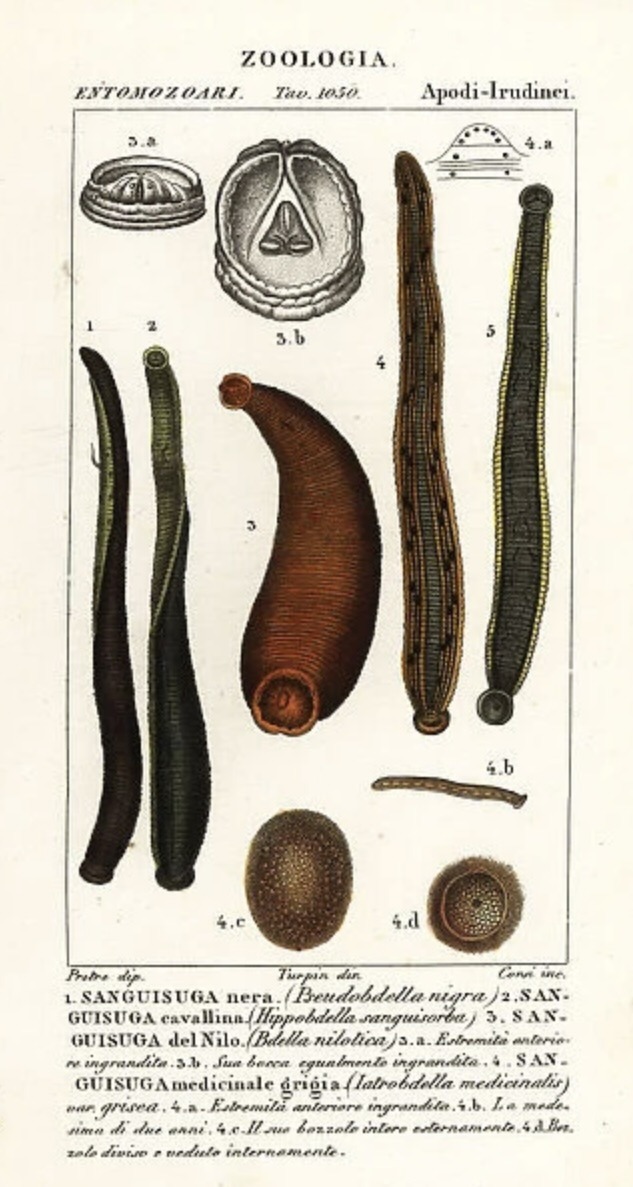
Antoine Laurent de Jussieus Dizionario delle Scienze Naturali, Dictionary of Natural Science, Florence, Italy, 1837
4 notes
·
View notes
Text
Au début de l'automne, L a perdu son logement, difficile de faire prise dans son circuit pour l'aider autant à se défendre qu'à se protéger. Nous assistons impuissant.es au délitement de ce qui tenait sa vie. Elle persiste en ignorant l'aide triviale que nous mobilisons et qui ne sait pas viser les instances puissantes et invisibles avec lesquelles elle est en relation, au final c'est là son style. Elle cuisine chaque jour des ingrédients défraîchis récupérés ici et là qu'elle mange debout ou devant l'ordinateur à grand renfort de bruits de bouche. Elle cuisine aussi pour son fantôme de fils et pour nous qui regardons sceptiques les ragoûts indéfinissables se déposer sur la table. Récemment, elle m'a demandé d'écrire une lettre à ce monsieur J qui vit à Meudon, figure importante de sa cosmogonie et de la sinologie française. Elle en parle comme d'un homme dont elle aurait pu s'éprendre, qu'elle a croisé à l'université Paris 7 ou Jussieu. Comme elle, il est passé par l'aéronautique avant de se spécialiser dans les relations internationales et les régions périphériques de la Chine. Je dis *écris la lettre, je la taperai à la machine. Pour l'adresse, Meudon, c'est maigre mais je chercherai*. L écrit sur le champ et sans s’asseoir, arc-boutée sur du mauvais papier mais d'une écriture précise une lettre pour demander de ses nouvelles à J. Elle me tend le papier, je lis l'appel à l'aide entre les lignes. Je tape à la machine la missive à la politesse particulière, entre lyrisme socialiste et délicatesse surannée. Une fois L repartie avec ses sacs vers ses objectifs faramineux, je google le fameux J et tombe immédiatement sur sa page Wikipédia qui affiche son décès récent. Je réfléchis. La mort est datée du jour de la fête nationale française, L saurait lire ce signe pour activer un réseau de sens complexe sur la tectonique géopolitique actuelle. J'emprunte une autre piste et prépare une enveloppe à l'adresse universitaire de J pour poster la missive. S'il est le manitou qu'elle pressent, il saura répondre de là où il est.
0 notes
Text
Stand Up for Science / Debout pour les Sciences
Rassemblements du vendredi 7 mars 2025
En écho à la journée Stand Up for Science initiée aux États-Unis, nous appelons à des actions de mobilisation le 7 mars en France. L’objectif est clair : défendre les sciences et les humanités, la liberté académique et l’Université comme piliers d’une société démocratique. Les lieux et heures des rassemblements dans différentes villes figurent ci-dessous. Pour vous renseigner (qui sommes nous ? pourquoi se mobiliser ? comment se mobiliser ?), pour contribuer, mais aussi pour les mises à jour des rendez-vous, un seul site :
https://standupforscience.fr Pour accéder aux renseignements pour chaque ville, il suffit de zoomer et cliquer sur la carte.
Amiens
13h30 – Rassemblement sur le parvis de la Faculté des Arts. 30 rue des Teinturiers, Amiens.
Bordeaux
16h – Discussions avec les citoyens. Université de Bordeaux
Caen
12h – Rassemblement sous la galerie vitrée puis départ en cortège. Campus 1, Université de Caen, esplanade de la Paix, Caen.
Compiègne
16h30 – Temps d'échange autour des actualités récentes et leurs conséquences. Université de technologie de Compiègne - Amphi 106 - Centre Benjamin Franklin, rue Couttolenc, Compiègne.
La Roche-sur-Yon
10h00 – Rassemblement sur le parvis du campus, entre les bâtiments E et F, en haut des marches. 221 Rue Hubert Cailler, La Roche-sur-Yon.
Lille
17h30 – Déambulation dans les rues de Lille. 12h30: Rassemblements sur les différents p��les universitaires à Cité scientifique, Pont de Bois, Lille Moulins
Lyon
16h00 – Rassemblement place des Terreaux. Place des Terreaux, Lyon.
Marseille
12h00 – Rassemblement au Muséum d'histoire naturelle. Palais Longchamp, Boulevard du Jardin Zoologique, Marseille.
Montpellier
12h00 – Rassemblement devant la Délégation régionale du CNRS. 1919 route de Mende, Montpellier.
12h00 – Photo collective. Faculté de Médecine, Campus Arnaud de Villeneuve, 641 avenue du Doyen Gaston Giraud, Montpellier. Arrêt de tram Occitanie, devant Genopolys.
12h00 – Rassemblement sur le parvis Alexander Grothendieck. Faculté des sciences, Campus Triollet, place Eugène Bataillon, Montpellier.
12h00 – Rassemblement au Château du campus de La Gaillarde. Institut Agro de Montpellier, 2 Place Pierre Viala, Campus La Gaillarde, Montpellier
18h00 – Rassemblement place de la Comédie. Place de la Comédie, Montpellier.
Nancy
10h00 – Débat sur la situation aux USA, la liberté académique en France, et les moyens de nous protéger face à l’extrême droite qui monte. amphithéâtre de la présidence Léopold, 34 cours Léopold, Nancy.
12-30-13h30 – ronde des obstiné·e·s. Place Stanislas, Nancy.
Nantes
13h30-14h00 – Photo de groupe avec la banderole Stand up for science. Esplanade devant les Ateliers et Chantiers de la Loire (campus Île de Nantes), 2 Boulevard Léon Bureau, Nantes.
Paris
9h30-11h00 – Conférence de presse ouverte à toutes et tous. Collège de France, 11 place Marcelin Berthelot, Paris. Exposés de Patrick Boucheron (Professeur au Collège de France), Dominique Costagliola (Directrice de Recherche Emérite à l’Inserm), Valérie Masson-Delmotte (Directrice de recherche, CEA) et Claire Mathieu (Directrice de Recherche, CNRS), consacrés aux menaces contre les sciences et aux raisons de la mobilisation.Les journalistes présents auront la priorité des questions. Les scientifiques et universitaires présents seront disponibles pour accorder des entretiens exclusifs.
11h30-13h00 – Conférences publiques et tables rondes. Place Jussieu, Paris. Interventions de Florence Débarre (Directrice de recherche CNRS en biologie évolutive), Johanna Siméant Germanos (professeur de science politique, ENS), Michaël Zemmour (Professeur de sciences économiques à l’Université Lyon 2). Une table ronde sur le climat conclura l’événement avec la participation de Valérie Masson-Delmotte.La priorité des questions et interventions sera donnée aux étudiants et au grand public.
13h30 – Rassemblement et départ de la marche Stand up for science dans le quartier latin. Place Jussieu, Paris. Itinéraire : Place Jussieu – rue Jussieu – rue des Écoles – place de la Sorbonne – Boulevard Saint-Michel – Port Royal.Des interventions et happenings auront lieu devant le Collège de France et place de la Sorbonne. Les participants sont invités, en passant devant le jardin du Luxembourg et à l’issue de la marche, à aller déposer une fleur à la statue de la Liberté et à se prendre en photo devant avec un panonceau « Stand up for science » ou « In solidarity » ou tout autre message de leur goût à partager avec les scientifiques et universitaires travaillant aux États-Unis. Instruments de musique, casseroles et sifflets brésiliens bienvenus. Fleurs, toges et blouses de chimie, panonceaux à apporter.
Rennes
12h00 – Rassemblement, distribution de tracts, discussions avec des étudiants et citoyens sur la place de la science dans une société démocratique, photo de groupe. Place de la République, Rennes.
Saint-Nazaire
13h30 – Rassemblement devant les portes vitrées du campus Heinlex (Bâtiment 7), 60 rue Michel-Ange, Saint-Nazaire.
Toulouse
18h00 – Rassemblement et marche. 37-41 allées Jules Guesde, Toulouse.
Tours
12h00 – Rassemblement pour défendre une recherche publique libre, indépendante et pleinement reconnue. 3, rue des Tanneurs, Tours.
Valbonne - Sophia Antipolis
12h30 – Forum-débat. Place Bermond, Sophia Antipolis. _______________________________________________ Standupforscience mailing list [email protected]://listes.lautre.net/cgi-bin/mailman/listinfo/standupforscience
#gallisyndicalisme#upthebaguette#whatthefrance#stand up for science#je recopie l'email ici parce que je sais que des gens intéressés ne cliquent quand même pas les choses
8 notes
·
View notes
Text
Exploring Paris's Hidden Gaming Fest at Jussieu Campus | Epic Arcade Adventures | Parisian Diaries
youtube
Dive into the thrilling world of gaming at Paris's hidden gem, the Jussieu Campus! In this vlog, we explore the bustling video game festival, where we uncover vintage arcade games, engaging tournaments, and creative setups. From classics like Mario Kart and Street Fighter to unique innovations like gaming in a laundry machine, there's no shortage of excitement. We'll chat with passionate gamers, enjoy nostalgic moments, and even try out a few strategy games ourselves. Whether you're a fan of retro gaming or simply curious about Parisian culture, this video offers a unique look at the vibrant gaming scene in Paris. Don't miss the fun!
#jussieucampus#parisgamingfestival#parisarcade#gamingparis#vintagegames#mariokart#streetfighter#tetris#parisvlog#retrogaming#parisianvibes#Youtube
0 notes